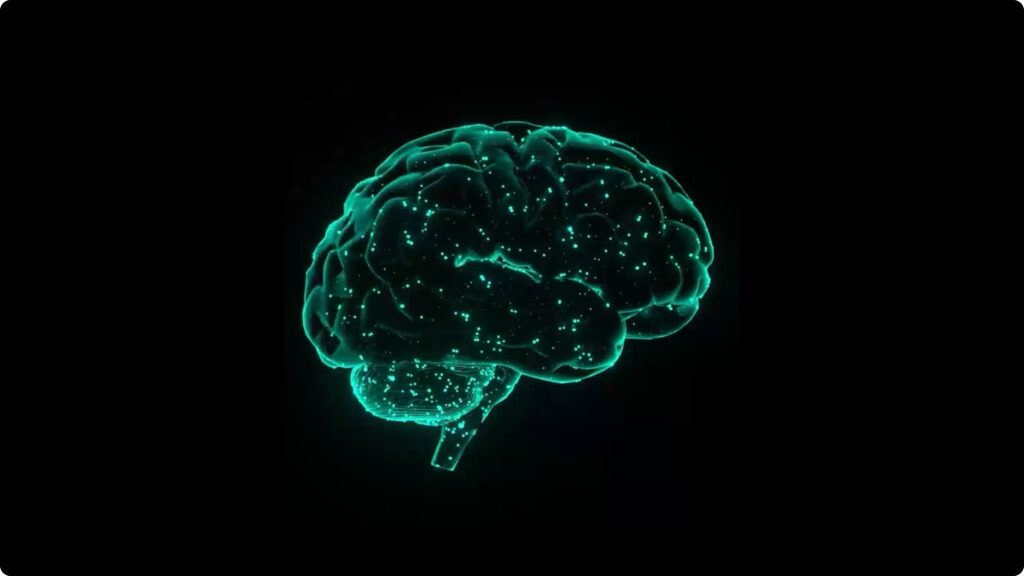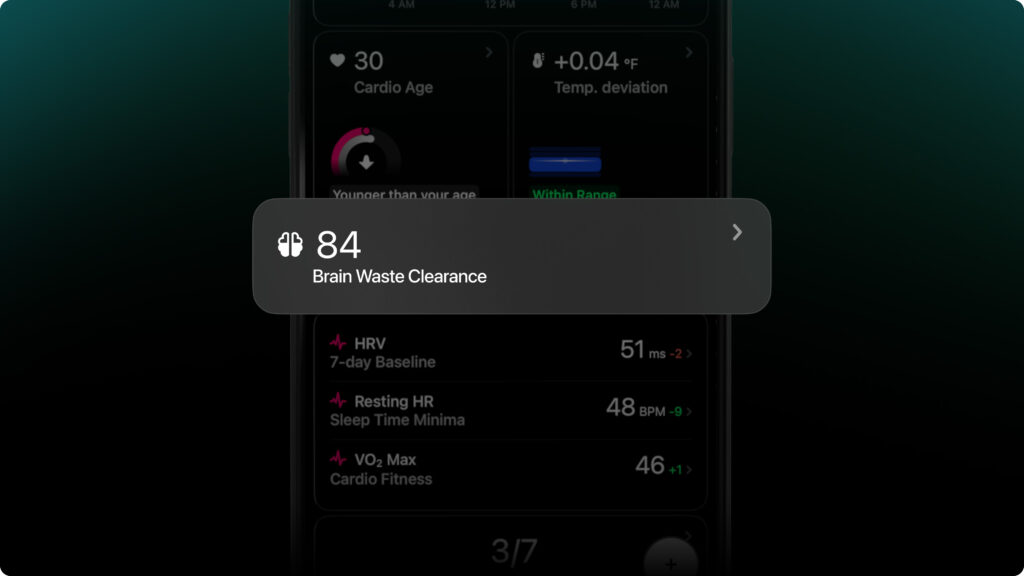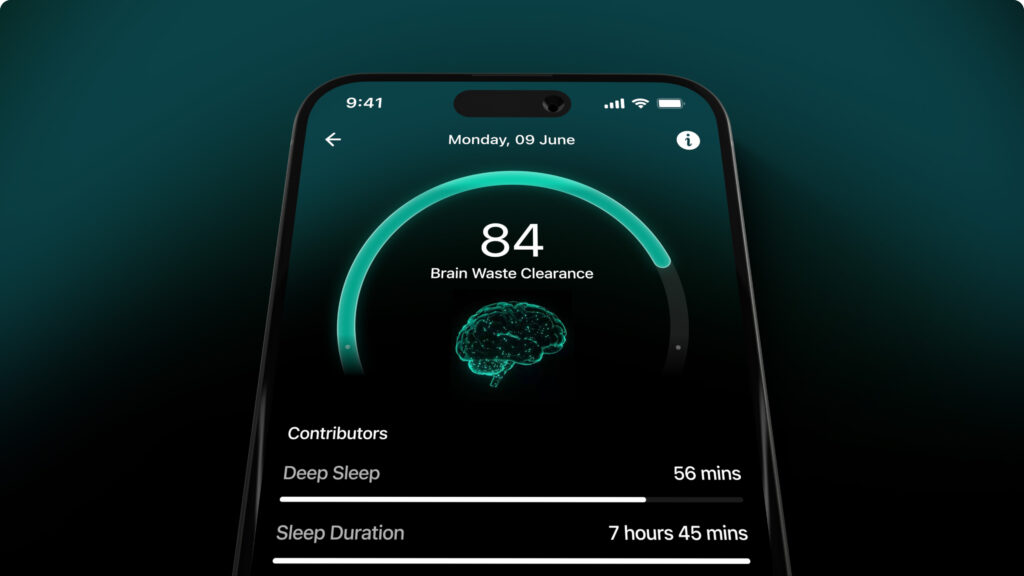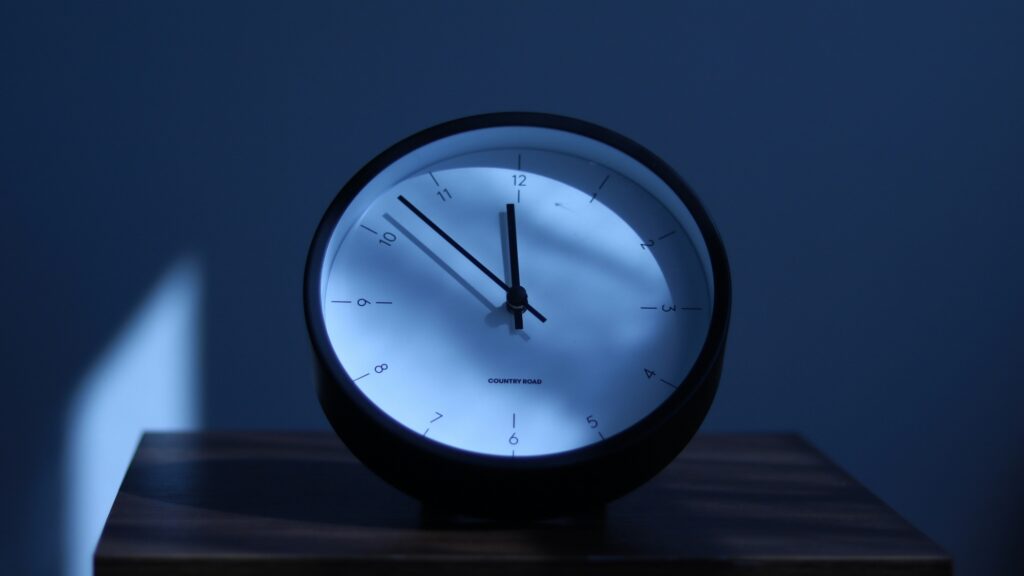The brain has its own way of recovering during sleep, and it goes well beyond rest. One of the most important processes that takes place while we sleep is the removal of waste from the brain.
This process, called glymphatic clearance, plays a key role in brain health, recovery, and long-term cognitive function.
Now, with the Ultrahuman Ring AIR, users can access a new signal, Brain Waste Clearance, that estimates how effectively this recovery process is likely taking place.
Read next: All the new features landing in the Summer Release Sprint ’25
What is Brain Waste Clearance?

The brain produces metabolic waste throughout the day, including amyloid beta and tau proteins. If allowed to accumulate, they can form plaques and tangles that interfere with neuronal communication, and are associated with cognitive decline and neurodegenerative conditions like Alzheimer’s disease.
During deep sleep, the brain activates a system called the glymphatic system, which helps clear out this waste.
This process is not just about preventing disease – it’s closely tied to how recovered, sharp, and focused we feel. Disrupted sleep, high levels of fatigue, or poor recovery can all reduce the brain’s ability to carry out this task efficiently.
How Ultrahuman models Brain Waste Clearance

The Brain Waste Clearance signal is based on a combination of sleep, recovery, and temperature markers that reflect conditions under which glymphatic clearance is known to be more or less active. These include:
- Deep sleep quality
- Sleep duration and efficiency
- Heart rate variability (HRV)
- Skin temperature and sleep debt
These inputs are combined to produce a Brain Waste Clearance score – scaled between 0 and 100 – that reflects how favorable last night’s conditions were for brain recovery. High scores suggest optimal recovery conditions; lower scores may signal reduced clearance due to disrupted sleep or stress.
Where to find Brain Waste Clearance

You’ll find Brain Waste Clearance is displayed on the Ultrahuman app, and the card displays last night’s performance.
Tapping on the card will reveal a standalone page showcasing the contributors to Brain Waste Clearance and exactly how today’s number was calculated. This enables you to understand the steps you can take to boost brain health and reduce Brain Age.
You will also see a 14-day trend on the same page, which adds longitudinal insight and takes a long-term view.
Conclusion
Understanding how your brain clears waste adds a new dimension to sleep tracking. This signal doesn’t just measure how long you slept – it helps contextualize how restorative that sleep was for brain health and long-term cognitive resilience.
For Ultrahuman users, Brain Waste Clearance adds a behavioral feedback loop: it translates nighttime signals into a single metric that responds to lifestyle changes in real time.
It gives users a more complete picture of how their brain is recovering – and how small habits can impact something as fundamental as long-term brain health.








